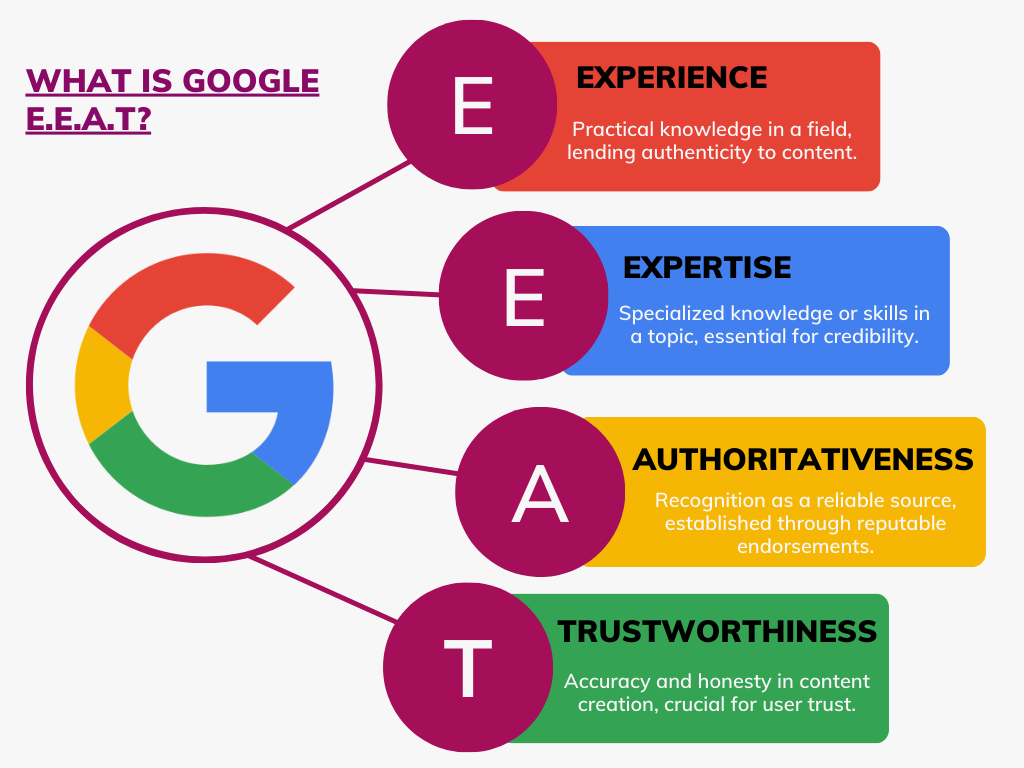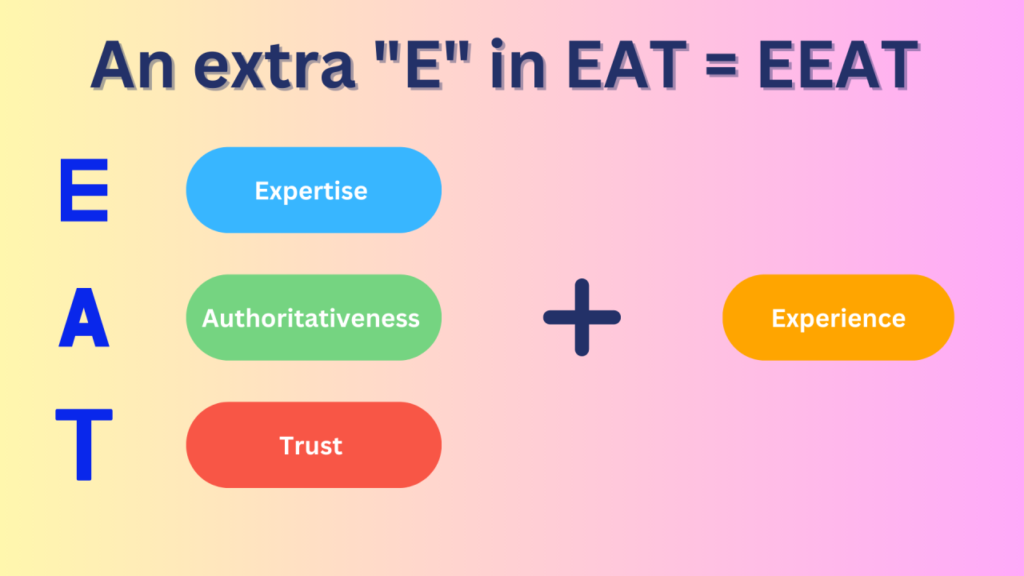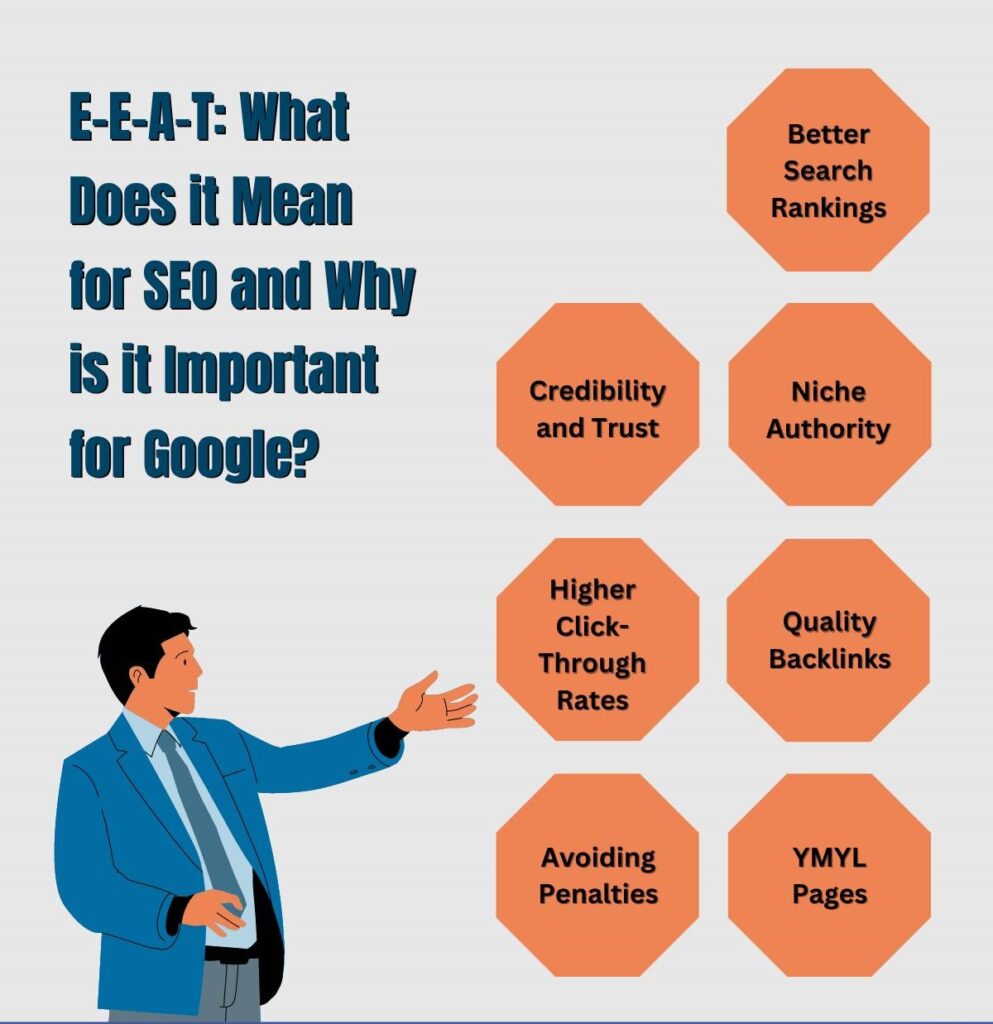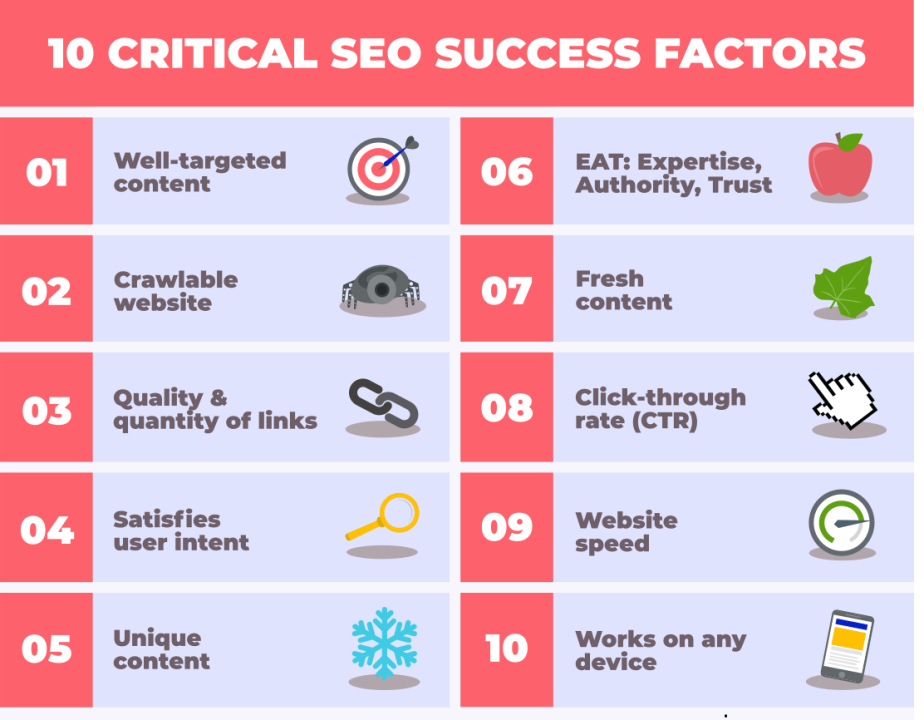Search engine optimization (SEO) is a crucial aspect of modern website design. There are a variety of strategies used to optimize websites for search engine results, but one of the most important is Google’s E-E-A-T guidelines. Here, we will discuss Google E-E-A-T and its impacts on SEO, and how businesses can use it to improve their SEO performance.
We’ll discuss the main components of the E-E-A-T framework, its benefits to SEO, how user experience and quality content can help a business, and some best practices for optimizing a website with Google’s E-E-A-T guidelines. By exploring the implications of Google E-E-A-T on SEO and best practices for implementation, businesses can make sure they create an effective SEO strategy that adheres to Google’s standards.

What is Google’s E-E-A-T?
Google’s E-E-A-T (Experience, Expertise, Authoritativeness, and Trustworthiness) is a set of guidelines used by Google to help it make decisions about which websites should rank at the top of its search engine results pages (SERPs).
E-E-A-T encourages search engine optimization (SEO) professionals to focus on creating helpful websites that maximize user experience. This usually means creating content that is useful and trustworthy, as well as authoritative and expert in its field.
The goal of E-E-A-T is to rank websites that provide users with quality, reliable resources on a wide variety of topics. As a result, sites with poor E-E-A-T tend to be heavily penalized.
E-E-A-T Framework’s Impact on SEO
Sites that are deemed to have good E-E-A-T tend to see higher search engine rankings, as Google considers the quality of the content to be more important than keyword stuffing or other traditional SEO tactics.
To ensure that a website has optimal E-E-A-T compliance, SEO professionals are encouraged to create original content with an authoritative and expert voice, using quality sources where appropriate to back up claims and facts. Websites should also include a high level of transparency when providing contact information and should ensure all content is up-to-date and accurate. Furthermore, good grammar, properly formatted HTML and other good web design practices should be maintained to maximize the user experience.

Google E-E-A-T is an important element of modern-day SEO, as evidenced by its inclusion in Google’s Helpful Content Update (HCU). Businesses must adhere to these guidelines to maximize their website’s potential and ensure it is properly ranked on SERPs. By consistently providing users with informative, reliable, and trustworthy content, webmasters can help their websites succeed in the long term and enjoy high search engine rankings.
Google Search Quality Evaluator Guidelines
The Google Search Quality Evaluator Guidelines and the E-E-A-T framework are essential tools for understanding how Google’s search algorithms evaluate and rank web content. By incorporating these principles into their content strategy, website owners and content creators can improve their online presence’s perceived quality and trustworthiness.
The Google Search Quality Evaluator Guidelines are a detailed set of instructions used by human quality raters to evaluate the trustworthiness and quality of websites and web pages. These guidelines outline the criteria for assessing a site’s content, user experience, and overall reputation.
Google uses a team of over 16,000 human quality raters around the world to assess websites using the E-E-A-T principles. While these ratings do not directly impact search engine rankings, they provide valuable feedback to Google’s data scientists and AI engineers. This helps them understand how well their algorithms are meeting users’ informational, transactional, and navigational needs, and which areas need improvement.

The Search Quality Evaluator Guidelines are updated periodically to reflect changes in technology, protocols, user behavior, legal considerations, and e-commerce trends. Understanding these guidelines and the E-E-A-T framework can be valuable for content creators and website publishers, as it helps them identify ways to improve the credibility and authority of their content.
By demonstrating higher levels of expertise, experience, authoritativeness, and trustworthiness, content creators can gain a competitive advantage in the crowded digital landscape. This not only increases the chances of their content being recognized as a credible and authoritative source, but it also helps their content stand out and better serve the needs of their target audience.
What is Google’s E-E-A-T?
E-E-A-T stands for Experience, Expertise, Authoritativeness, and Trustworthiness. E-E-A-T is a framework used by Google to assess the quality and credibility of online content. It is part of Google’s Search Quality Evaluator Guidelines. The four components include –
- Experience – Whether the content creator has direct, first-hand experience with the topic.
- Expertise – The level of subject matter knowledge and credentials of the content creator.
- Authoritativeness – The prominence and reputation of the content creator or website.
- Trustworthiness – Whether the content can be trusted to be accurate and unbiased.
E-E-A-T (Experience, Expertise, Authoritativeness, and Trustworthiness) is a procedure that Google’s human reviewers use to assess content quality.
E-E-A-T is not a direct ranking factor, but Google uses it to evaluate the overall quality of search results. Optimizing for strong E-E-A-T signals can indirectly improve a website’s search performance.
E-E-A-T is especially important for “Your Money or Your Life” (YMYL) topics that can impact a user’s health, finances, safety, or well-being. However, it applies to all types of content where users value expertise and credibility.

Demonstrating E-E-A-T involves things like highlighting the content creator’s qualifications, showcasing real-world experience, citing credible sources, and maintaining a trustworthy online presence. As Google continues to prioritize high-quality, authoritative content, addressing E-E-A-T principles is crucial for search engine optimization and providing value to users.
Optimizing Your Site with Google E-E-A-T
Effectively optimizing your website is crucial for maximizing visibility on search engine result pages (SERPs) and driving organic traffic that can be converted into customers. Google’s E-E-A-T (Experience, Expertise, Authority, and Trustworthiness) guidelines are essential for achieving optimal search engine rankings, as they focus on obtaining quality content backed by credible sources and reliable, transparent information. The following best practices to help optimize your website and align with Google’s E-E-A-T guidelines-
Establish Experienced Writers
- Define your content needs and post job descriptions on diverse platforms.
- Implement a screening process to assess writing skills and expertise.
- Offer competitive pay and create an environment for continuous learning.
- Attract and retain quality writers through fair compensation and growth opportunities
Improve Website Speed and Performance
- Faster-loading sites rank higher in Google’s search engine results.
- Implement tactics like image compression, browser cache leveraging, and external script minimization to enhance page loading times.
Create Quality Content
- Ensure content is well-written, accurate, and free of plagiarism.
- Provide useful and accurate information without excessive length.
- Maintain high standards for spelling, grammar, and overall quality.
Ensure Website Security
- Secure websites build trust among visitors and are ranked higher in Google’s SERPs.
- Utilize SSL encryption, malware scanners, and other tools to keep data secure.
Establish Internal Linking
- Create an internal link structure by linking between relevant pages on your website.
- This helps with optimization and enhances the user experience.
Develop Credibility and Authority
- Achieve links from websites in the same industry and maintain good relationships with industry influencers.
- These efforts help establish your website’s credibility and authority.
Implement Search Engine Optimization (SEO)
- Incorporate SEO techniques, such as backlinks and meta tags, to ensure your content is easily discoverable by search engine crawlers.
Utilize Structured Data
- Structured data markup helps Google process and understand your content, contributing to E-E-A-T optimization.

By implementing these best practices for optimizing with Google’s E-E-A-T guidelines, you can ensure your website has the visibility, credibility, and authority to achieve optimal rankings. Remember, quality content and a secure website are essential elements, but a comprehensive approach considering multiple optimization factors is crucial for a successful website optimization campaign.











Fantastic beat I would like to apprentice while you amend your web site how could i subscribe for a blog site The account helped me a acceptable deal I had been a little bit acquainted of this your broadcast offered bright clear concept